The Amazing Stories About Palawan
About Palawan’s Acrobatic Jeepney Rides to Meet the Mynahs and the Gang!
These are my stories about Palawan travel and transportation, wildlife history, environment, people, laws, challenges and responses, and Palawan today.
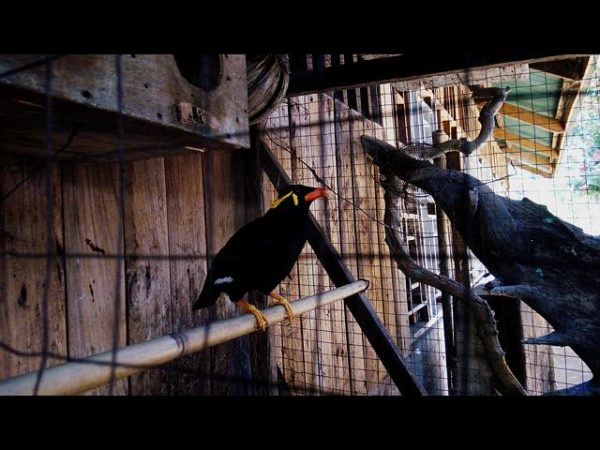
The talking mynah bird. Despite captivity, it speaks about “magandang buhay”, it’s a good life.”
Palawan’s History on Travel and Transportation
Acrobatic Jeepney Ride or Dance Ritual? Indeed, it’s the Ride of Your Life!
The Transportation
What I envied talking about Palawan when I was in college (the early ’80s) is that University Scholar students coming from this far-flung Province get higher fare allowances. It’s given twice a year, on Christmas break, and at the end of the school year. I think the same is true until today.
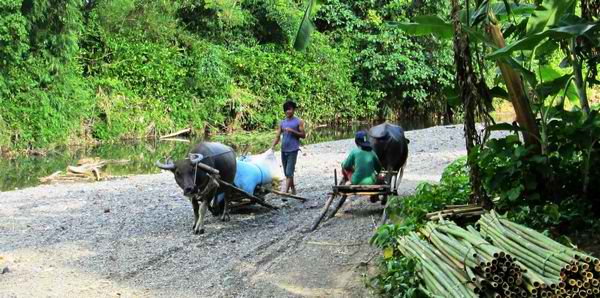
The Province is so far away that I rode almost all transportation types when I came here in 1988. I took the Kalesa (a horse-drawn carriage) from home to the pier for an overnight boat ride to Cebu city. From Cebu pier, a tricycle brought me to the taxi lines for an hour ride to Cebu’s Mactan Airport. So then I arrived in Puerto Princesa City for a little more than an hour of a plane ride. Back then, there was only one flight per week from Cebu to PUerto Princesa City.
If your money is not enough to buy a plane ticket, you have no choice but to take the boat ride from Iligan, via Cebu, to Manila then to Palawan for four days and three nights.
Sorry for that long detour. I haven’t reached my destination yet, which is Kilometer 25, Barangay Bacungan, north of the city. So from Puerto Princesa Airport, I was supposed to take another tricycle to the jeepney terminal. The jeepney there leaves “regularly on time” when it is full of passengers. The commuters and their stuff fill the jeepney up to its top. The crammed passengers up top the jeepney displayed a festival of rugged feet in their new colored slippers hanging around the roof’s side like an acrobatic stunt in a cheerleading competition. Such a magnificent site isn’t seen that much anymore these days.
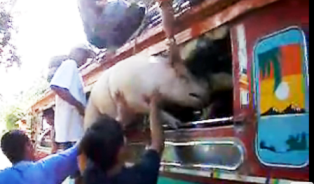
The Offering Dance Ritual
You can also mistake that jeepney ride as a ritual dance offering. Passengers raised each of their tenders; a pig over there, chickens on the sides, sacks of rice on the inside. Not to mention gallons and gallons of gasoline and petroleum gas that is more than enough to start a bonfire.
After a while of roaming around the city picking up passengers’ stuff, I was already greasily perspiring and suffocating at the smell of animal feeds and fumes inside the vehicle. By that time, I prayed to all the Saints hoping that the jeepney finally picks up speed so I can get some air. But instead, it slowed down and stopped at Cost Plus Bakery (Not around anymore)! One or two of the passengers, maybe sensing my discomfort, told me that it’s the last stop.
Everybody got off to buy bread offered in all colors, shapes, and sizes. I should have gotten some too because that last stop excludes flat tires.
Lost in Paradise Island, the Philippines Last Ecological Frontier
Back in college, that kind of ride of your life is a big secret. Why? Because students coming from Palawan, they don’t go home! Instead, they spend their fare allowance in some other places in Mindanao at the homes of their newfound friends, or just wander around the campus. So then I became the curious cat. When I got here, I didn’t go home to Mindanao for ten long years. I told my Mom not to worry, I just got lost in Paradise Island! The Philippines’ Last Ecological Frontier!
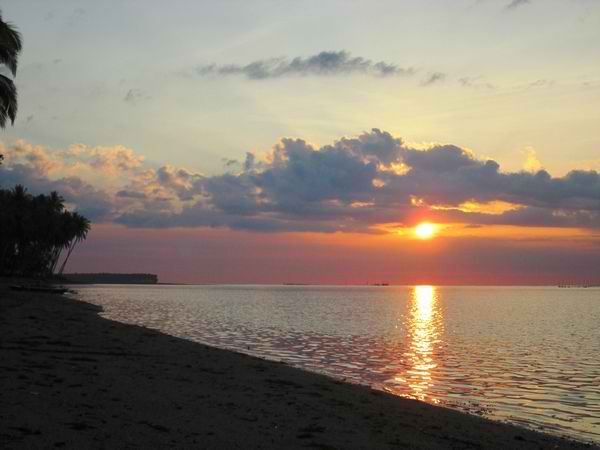
Unbeknownst to me, I got infected with the Kambak-kambak syndrome. Something about Palawan that makes you want to stay, Or if you go away, you’d always find yourself back in the province. Kambak-kambak or to come back again and again, syndrome!
What Actually Happened
I skipped that first Jeepney ride from the airport. Instead, my soon to be employer picked me up at the airport with a re-painted thick-bodied Chevrolet truck. A hand me down from the perhaps the earliest generation, that when it was first proudly presented, passing along the village center, its bumper fell off.
But I tell you, that truck worked wonders for that organization. After they took their foreign funder for a ride to their service areas to meet their project beneficiaries, on through the rugged, hilly, cliffy, bumpy logging roads, they got themselves a new Nissan Pathfinder pick-up truck. I was a witness.
That old green Chevrolet wasn’t a 4-wheel drive truck and was always parked at the repair shop. Working with the Palawan Center for Appropriate Rural Technology, Inc. (PCART) didn’t help me skip those top-load rides. Not only on jeepneys but also with the buses. It’s a 4-hour straight and six hours with flat tires travel of 135 km. to the Municipality of Roxas, my place of deployment as a Community Organizer. That’s what I miss about Palawan these days, my land travel adventures.
About Palawan’s Wildlife History
Wildlife For Sale
Even with the very long travel, I can proudly say that I made it to Palawan right on time. I had an incredible experience trekking some of its thickly forested mountains and see the wildlife, even in the lower elevation. Community folks told me, if you’re not lucky enough to see the scaly Armadillo (Balintong) or Ant Eaters and their colleague porcupines (Durian-durian) and the Palawan Bearcat (Arctictis binturong whitei) or hear and see the talking Mynah or Myna in the forest, you can buy them at Puerto Princesa City market.
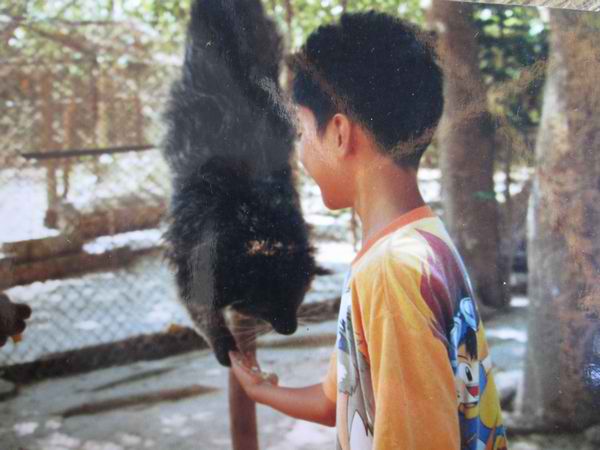
Indeed, as the vendors shout “Mynah for sale!” the black birds repeat it. The talking mynahs also mimic the sound of the few tricycles’ that roam around the city before—thus making Puerto Princesa sound like a highly urbanized place. I think it’s where the politician got the idea of declaring the city as such. The declaration enabled eager candidates to gain a third congressional seat for Palawan.
Freedom! Freedom!
Oh it’s such a busy day in that sidewalk near the market place. Mr. Armadillo retreats to its defense by covering itself with its scales. Mrs. Porcupine is always ready to throw its spines to intruders. Nervous little squirrels never stop munching. Occasionally, wild cats (musang) or civets are on display too. These are the civets who, unbelievably, are the poopers of the best and most expensive coffee in the whole world. Civet poops are called civet coffee or Kopi Luwak or Kape Alamid. Musangs are nocturnal animals. They have sharp fangs and claws, which gave the green parrot nearby wave of anxiety. The poor bird was nervously walking sideways back and forth on its one-foot long highway stick. By the way, all of them are inside their cages per species.
I always wonder if all those birds and animals were there on sale for pets. But it depends on the buyer whether it’s for the lovin’ or the eatin’. Thank God! No one sells skunks. Sorry for reminding you of the smell, but it’s the wildlife’s history before the City Government seriously enforced the Anti Wildlife Trafficking Laws. Someone finally taught the Mynas to shout, “FREEDOM! FREEDOM!” and “Get us back to the wilds!”. I was a witness.
The Votes from the Palawan-African Safari
Filipinos love imported goods, in may different forms. Even in our wildlife, we mixed African wild animals! I heard that story when I was a kid during the Martial Law days. The Marcoses established an African Safari in Palawan for the Philippines’ First Brat.
As a child, I really could not imagine how they brought those animals from Africa to Palawan. Then, in later years, I visited the place with my son, and I just believed it without question, the gang that escaped from New York did not make it to Madagascar. Instead, they crash-landed here in Palawan.
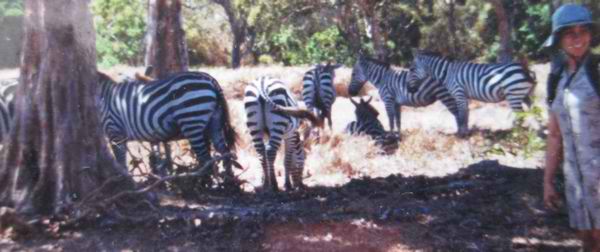
But then wild animals, especially the African ones, do not have the right to vote. Therefore, they did not help much the Marcoses for the winning. Luckily, the then First Family was able to run away from the angry Filipinos. However, some of those imported African creatures did not get a chance from the hungry ones.
African Safari Philippine Style, year-round hunting. More like poaching for Adobong Giraffe, Ginataang Zebra, Litsong Deer.
Filipino-African Safari Cuisine and whether its for the Hearts or the Bellies
Okay. Those are famous Filipino cuisine except for the addition of the names of some African wildlife. So usually, we have Adobong Pork (cooked in soy sauce and vinegar), Ginataang Beef (cooked in coconut milk), and Litsong Chicken (roasted).
The newly invented Filipino-African cuisine was a specialty on the island of Calauit, Busuanga, Palawan when their benefactors abandoned them. And before the Island of Calauit was “seriously” declared and enforced as an Animal Reserve and not anymore a Game Refuge as initially conceived. Just one welcoming and accommodating character about Palawan, providing a place for everyone, into their bellies and then hearts. Hurray!!
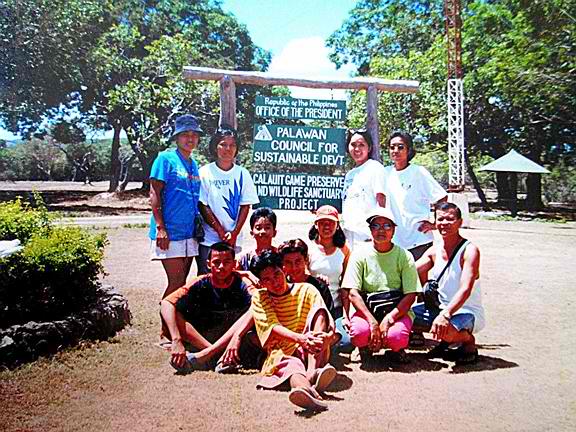
So now, we got hit with one of the most challenging questions in life. With the Philippines’ limited budget, I don’t want to say anything anymore, but here’s the problem, “In the realm of survival, conservation and protection, which is the priority, the people or the animals?” Maybe you have the smartest answer!
About Palawan’s Environment and People – Challenges and Responses
It’s all About Palawan Mountains’ Punky Haircut, Guardians of the Seas, Clinging Insects and Bio-Piracy, and RA & EO 101s.
As I have been saying, I am a witness to; how the population of Palawan increased over time, how its mountains got punky haircuts due to slash and burn farming and logging, illegal or not. Also, how some parts of the seas lost its corals because of blast and cyanide fishing, trawling, and other destructive methods, and how the forest products, like rattan, were shipped out to almost extinction.
There’s just no end to human activities for survival and greed.
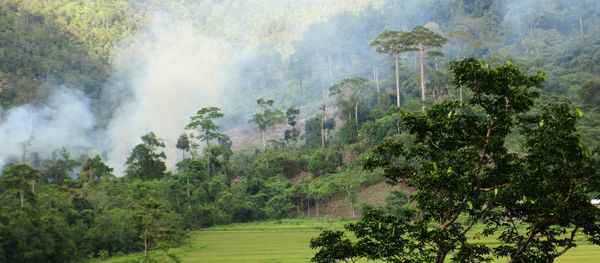
PCART’s area of coverage was not enough to reach a critical mass of upland farmers to settle and concentrate farming activities in the lowlands. There were others too that worked for the protection and preservation of the natural resource, but on their own, it’s just a patch by patch solution.
Persistence, Coping, and Proactivity
So before it’s too late, some other witnesses like me, gathered together to form a consortium of Non-Government Organizations (NGO) and People’s Organization (PO), named Palawan NGO Network, Inc. or PNNI. It aims to carry a unified campaign for the preservation and management of Palawan’s natural resource by making the organization visible in government initiatives as an NGO representative to “influence the direction of development for Palawan.” It also advocates for the recognition of the roles communities play in the development process: persistence, one word about Palawan Environmentalists.
The Tribal Communities heed the call, too, by forming themselves as the Nagkakaisang Tribo ng Palawan (NaTriPal) to protect their rights and their Forest Product Enterprises. NaTriPal program thrust was to pursue the Indigenous People’s Ancestral Domain Claims. Coping, that’s what it is about Palawan Tribal Communities.
The Government did its part, too, by creating the Palawan Council for Sustainable Development or PCSD. A special body tasks to implement the Strategic Environmental Plan (SEP) for Palawan. The SEP is geared to establishing first buffer zones, then the arable land, and then the alienable portions. Proactive, a flourishing character about Palawan Government.
The Guardians of Palawan
From there, several enforcement groups were formed. Like the Bantay-Palawan (Guardians of Palawan), the Bantay-Dagat (Guardians of the Seas), and Bantay Gubat (Guardians of the Forests), and of course, the volunteers’ group, Bantay-Salakay (the Guardians of Opportunities to do illegal things). Oh, we humans!
So we discipline ourselves with Laws. Or do we?
There’s the Logging Moratorium that made the largest logging company to stop its operations. They’re done cutting trees. They now hold key Government positions. Kudos and good luck to my friends who are working to make those leaders’ programs for Palawan a success!
RAs and EOs 101
Another Law pertains to Bio-Piracy. So when you go out of Puerto Princesa either by airplane or by boat, be sure that there are no insects clinging on your shirt or shorts, wanting so much to travel with you while at the airport or pier. Or else, you will be charged with Bio-Piracy. Of course, that’s a joke. But if you have them sleep in a 100% cotton mattress in a jar that smells like a morgue (preserved), you sure will not get along with that friend of mine, that’s now in my mind.
And a lot more about Palawan’s Laws and Ordinances. (I promise to name the exact title of the Laws and Ordinances here when I get back to this page. They are the Republic Acts or RAs and the Executive Orders or EOs 101s that my brain finds it very difficult to remember.)
- Banning of Live Fishing and along with it
- Prohibiting the use of compressor for dive fishing
- Mining Moratorium covering Puerto Princesa City
- Chainsaw Use Regulations
- Anti Littering
- Clean Air Act
And, recent campaigns;
- NO to MINING in Palawan
- NO to COAL-Fired Power Plant in Palawan
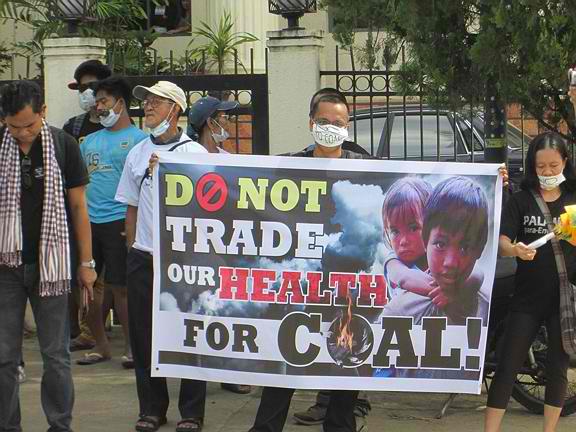 |
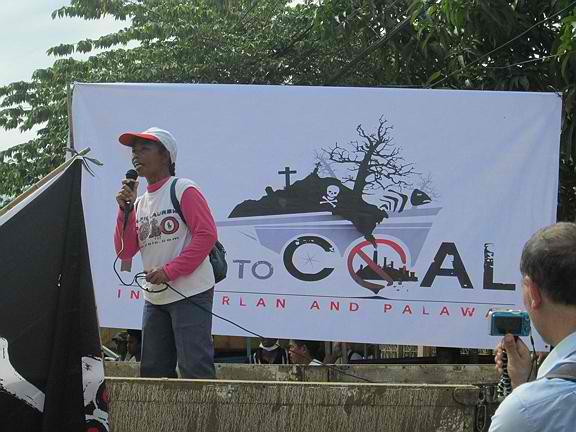 |
About Palawan Philippines Today
About Palawan’s Eco-tourism, Improved Travel Time from LWFL to ETD and ETA and Watching Mynas Fight and Flight for Freedom.
Ecotourism became what it is about Palawan. It has also become Puerto Princesa City’s Flagship Program. Furthermore, ecotourism was seen as one concrete solution to environmental degradation that will make everyone at stake happy. And it is becoming a potentially lucrative business for the locals, the vendors, the investors, and now the communities. It has finally sunk into them what their roles and responsibilities are in the preservation and management of their primary resource.
So then, Marine Sanctuaries were declared and established and are now community-based ecotourism sites. PNNI currently operates a Developmental Tourism or Alternative Tourism called PASYAR Travel and Tours, showcasing community-based ecotourism activities and initiatives.
Infrastructures, like paved highways and bridges, are now completed. Sadly for me, it has vanished the acrobatic or the dance ritual jeepney rides. (People also seem to spell jeepney as jeepnee or jitney. However, the preferred spelling is jeepney.)
Travel Time and Airlines
It tremendously decreased travel time. As the Municipality of Roxas is now only around 2 hours in an air-conditioned van, and at least following ETD and ETA (Expected Time of Departure and Expected Time of Arrival) and not LWFL – Leaves when Fully Loaded or Alas Puno schedule. The next town, Taytay, was reduced to 4 hours from 6-8 hours from Puerto. And El Nido, where most of Palawan’s amazing beach resorts are, is 6-7 hours from the 8-10 hours before.
El Nido had been accessible direct from Manila through Sea Air and Island Transvoyager Inc.
And also, thanks to Cebu Pacific Airlines, Air Asia, Philippine Airlines, and Air Philippines Express promo-fares, and of extending their point of reach. You can now get connecting flights from Mindanao and other points of the country to Puerto Princesa City. Cebu Pacific now has flights direct from Davao to Puerto Princesa City. And they have regular direct flights from Manila to Busuanga, Island.
There are now 21 flights coming into Puerto Princesa International Airport.
The Mynahs and the Gangs
About the Mynahs’ and the rest of the gang’s fight and flight for freedom, contact my friend Rommel for Bird Watching and other Wild Expeditions.
The Bird Gang’s membership has grown. There are the Philippine Cockatoos, in Rasa Island, and their passers-by friends, the migrating birds that stopover Ursula Island in the South. And a large population of birds endemic to Palawan.
The Calamian and African Deer have, I think, made a pact to stay intact whatever happens. I saw one of the Giraffes limping with a bandage on his/her ankle. Sorry I didn’t get a chance to know its gender. But they’re very friendly to tourists. And the Zebras? Huh?!? They still look perplexed.
Oh, about the armadillos, porcupines, squirrels, wild cats, and more? Let’s figure Palawan Province’s A Walk in the Wilds and learn a lot more funny and intense stories about Palawan. Or, you can visit and meet most of them at Crocodile Farm Palawan/ Palawan Wildlife Rescue and Conservation Center.
And of course, about Palawan Beach Resorts and Dive Sites!
Come to Palawan; it’s your chance to commune with nature. Palawan always gets my salute! A place to experience your endearing moments.